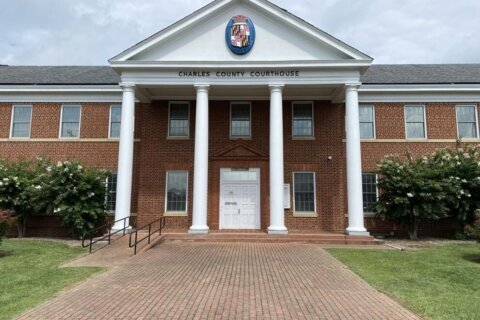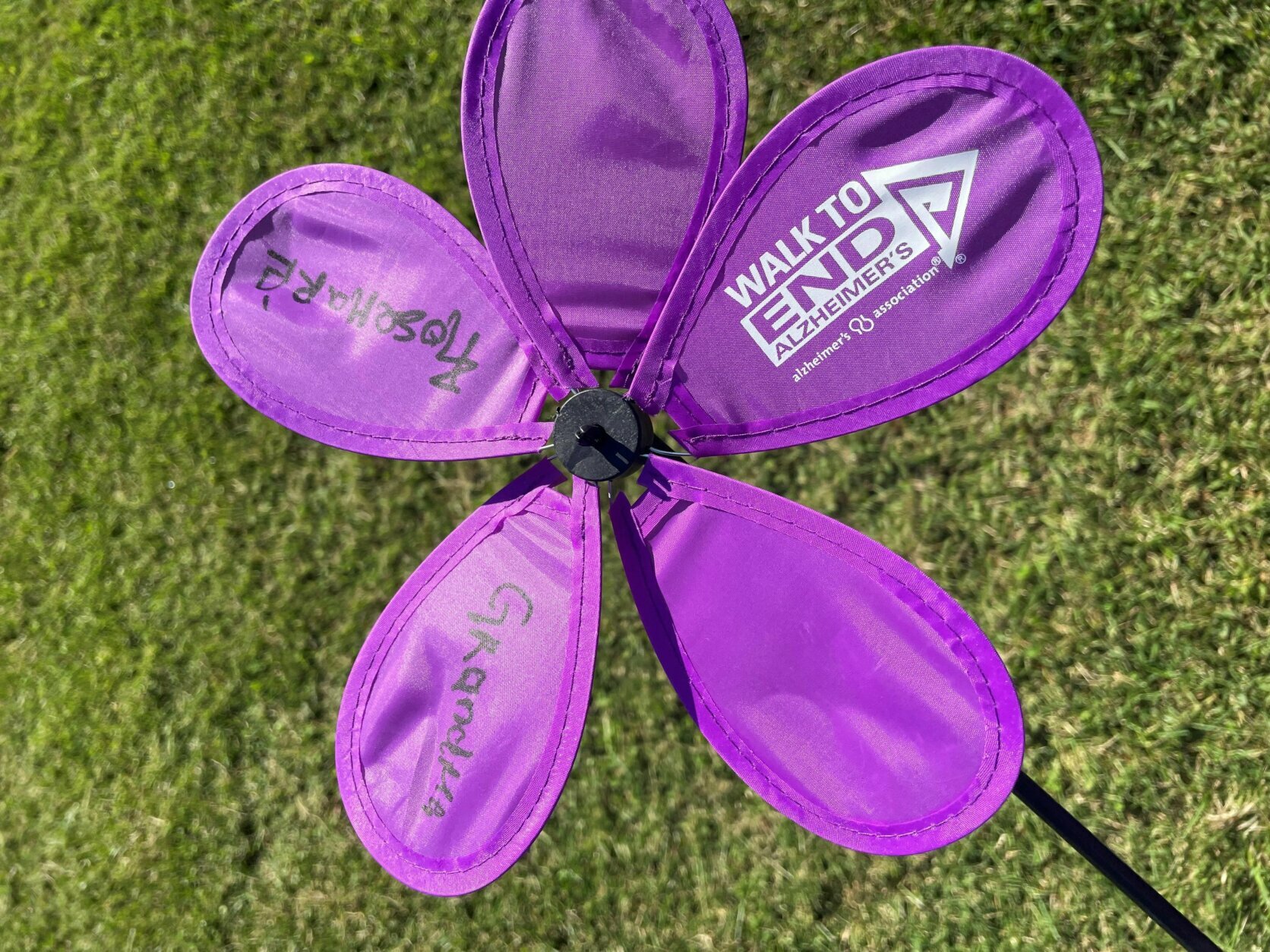
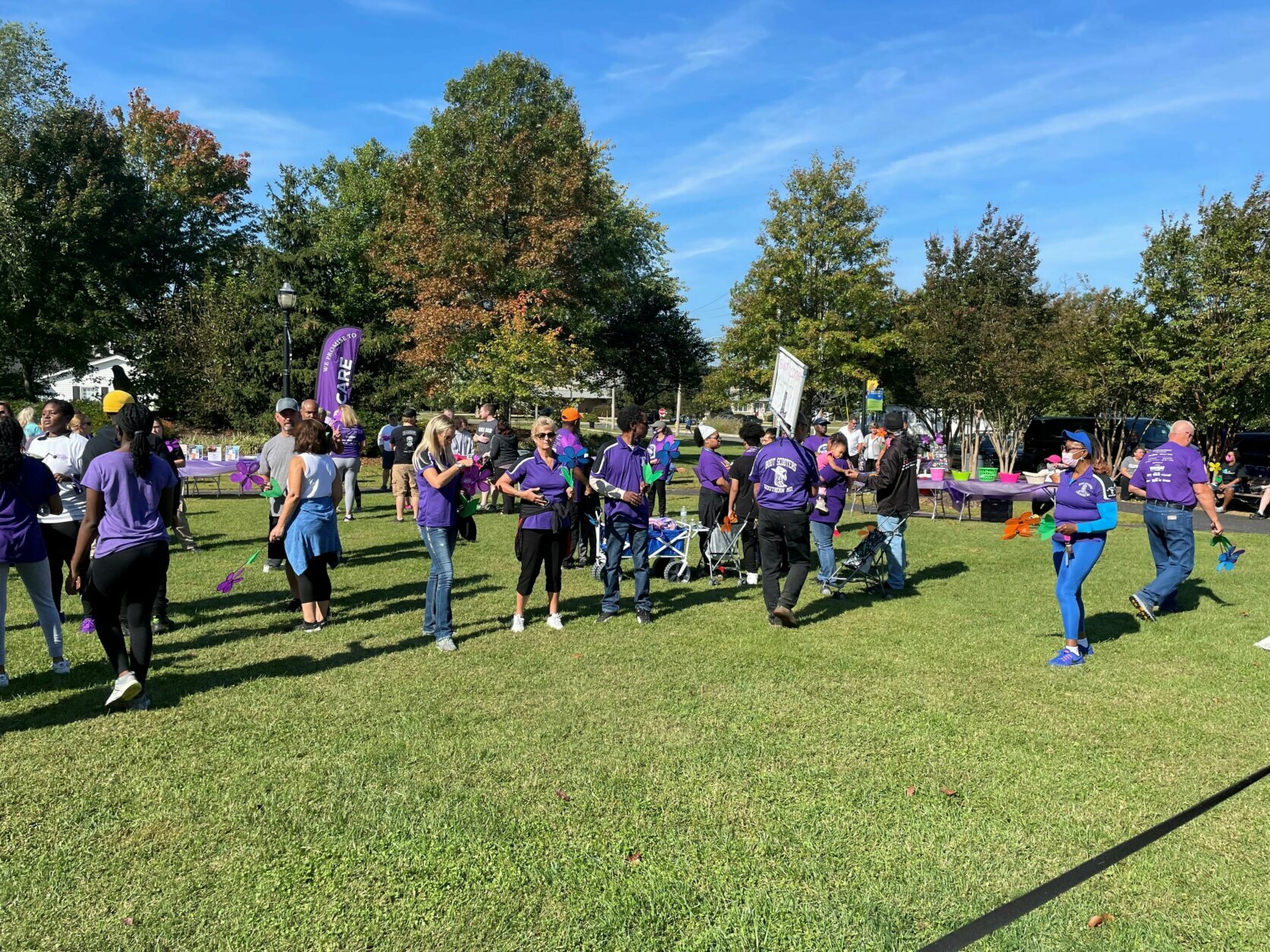
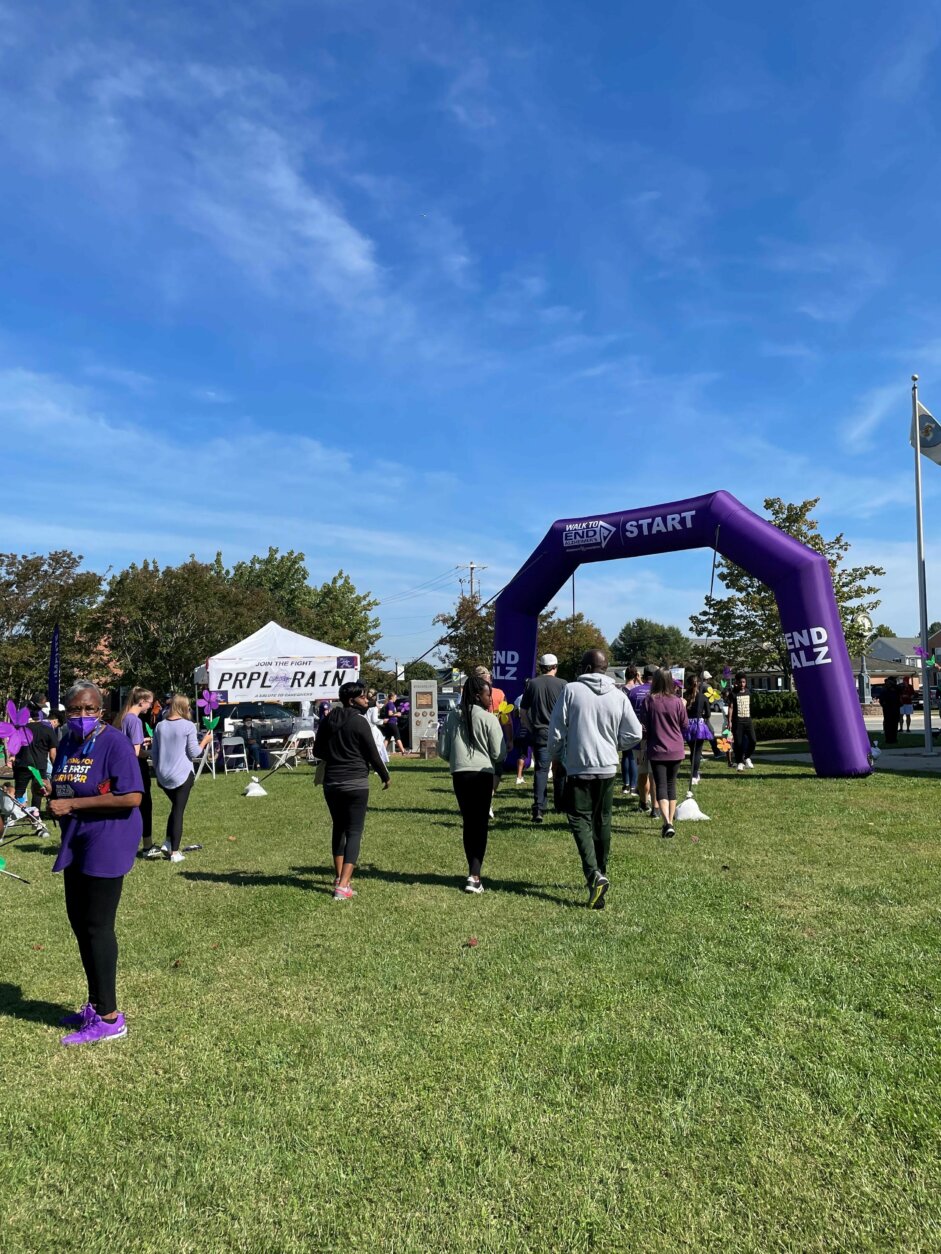
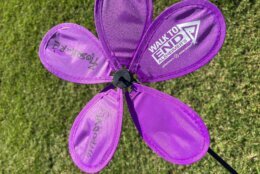
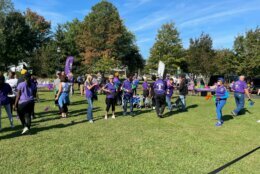
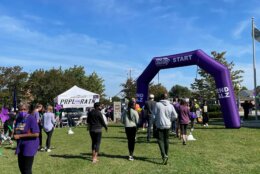
Hundreds of supporters gathered at La Plata Town Hall in Charles County, Maryland, for Saturday’s Walk to End Alzheimer’s.
The Alzheimer’s Association Walk to End Alzheimer’s leads the way in helping to find a cure for the illness, and all other dementia. The association’s walks, which take place across the nation, are the world’s largest volunteer multi-event to help spread awareness and raise money for Alzheimer’s care and research.
Among those who walked in Saturday’s event was Katie Senger lives in Alexandria, Virginia. Senger’s grandmother death was caused by Alzheimer’s when Senger was a young girl.
“It was the first funeral I’ve ever gone to. It’s especially hard because I’m named after her and I’m her baby grandchild,” Senger said.
Her grandmother wasn’t the only person in her family to be affected by Alzheimer’s. Her aunt Rosemarie was killed by the disease and her aunt Kathy currently suffers from the illness.
Senger first learned of the walks through her cousin Jody, who organized a virtual walk in Las Vegas last year, for their aunt Kathy who has Alzheimer’s and is in clinical trials. This fall, Senger will participate in 11 Alzheimer’s Association Walk to End Alzheimer’s events in several states, including the premier Walk on the National Mall on Saturday, Oct. 9 and in Reston, Virginia, in late October.
In the D.C. area, approximately 269,000 people aged 65 and older are living with the disease and almost 590,000 family and friends are caregivers. The illness costs the region more than $14 billion in unpaid care.
In Maryland alone, 110,000 people aged 65 and older are living with the disease and about 238,000 family and friends are caregivers. The disease has cost that state about $1.2 billion dollars to the state’s Medicaid program and about $6.6 billion in unpaid care.
Meanwhile, nationwide, more than 6 million Americans are living with Alzheimer’s disease, which is now a leading cause of death in the United States. Additionally, more than 11 million family and friends provide unpaid care to those living with Alzheimer’s and other forms of dementia.
According to the Alzheimer’s Association, Alzheimer’s and dementia related deaths have increased by 16% during the pandemic.
“When you are a caretaker or a family member, watching your loved one become somebody different, lose themselves, is heartbreaking to watch. Because you know who that person is, and they’re gone, even before they’re gone,” Senger said.
To remember the family members Senger lost to Alzheimer’s, she walked holding a purple flower with her grandmother’s and aunt’s names and a flag. Carrying a purple flower means you lost someone to Alzheimer’s, carrying a yellow flower means you’re a caregiver and a white flower represents hope for a cure.
“They asked people to hold up the flower with the color of why they were there. It was it was really quite amazing. And then they also raised the white flower that will someday be the flower for the first cure,” Senger said.
Saturday’s walk in Charles County hosted more than 260 participants and met its fundraising goal of $65,000. Overall, about 79% of donations goes to Alzheimer’s care and support, which includes an online message board and a 24/7 helpline that offers assistance. The hotline is a service Senger encourages those with loved ones who have Alzheimer’s use.
“The best advice that I can give to somebody is just reach out to other people. There are support groups that the ALZ organization has for exactly that sort of thing,” Senger said. “But be willing to talk to people and be willing to cry when you need to. Because it’s a devastating thing to watch.”
EDITOR’S NOTE: The story has been updated to reflect the correct spelling of Senger’ aunt.


